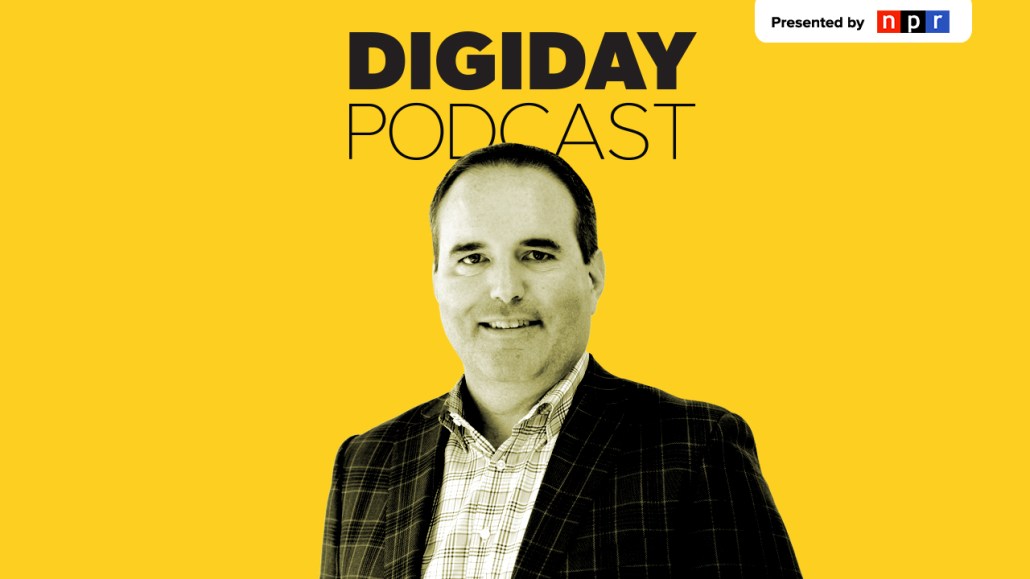Industry Dive’s Sean Griffey on building a $22 million media business with no venture capital

Subscribe: iTunes | Google Play | Stitcher | Anchor
Beyond the sexy names in digital publishing, there are small, growing media companies that are profitable. Industry Dive, an online-only B2B company based in Washington D.C., has a portfolio of industry-focused publications devoted to big money but unsexy areas like waste management. Now employing over 100 people with no venture capital funding, Industry Dive is a good proof point that the sky is not falling for all “ad-dependent” media.
“We’ll do about $22 million in revenue this year. We’ll have about 25 percent EBITDA margins,” said Sean Griffey, co-founder and CEO of Industry Dive, on this week’s Digiday Podcast. “We think each of our verticals can be $5-$10 million in revenue just in digital advertising before we do the rest. We still have room to grow in all of the markets. We don’t sell on impressions, we sell sponsorships within those industries. We’re evaluated on whether we helped them have deep conversations with executives within that industry. Our marketers know that their targets read us because their own companies read us, they see us in the trade shows.”
Griffey discussed the reasons why he wants to stick to the ad model for Industry Dive, stretching brands across the several industries they cover and their ability to make measured bets in their business. Edited highlights below.
Finding audiences that aren’t commoditized yet.
“We really believed in ad markets. What we saw was that audiences were being commoditized and when they become a commodity, the ad market breaks down. If you believe in the model and you’re good at it, you need to find areas where audiences are not commoditized. That is often in very niche and vertical industries. We set up the company to not just own a single market but be able to apply the infrastructure, learnings and technology across all of them. We launched with five industries: construction, electric utility, solid waste and recycling, marketing and education.”
How to judge frothy markets.
“When we looked at the criteria where we picked markets, one of the things I didn’t realize was the [how much the] amount of technology spent would be important to us. That’s a real indicator for us for whether the market is going to be frothy or not. We really struggled with our construction publication for years until we turned it on to the construction technology. Then the publication took off with advertisers. People don’t sell garbage trucks online but they sell software online. Had we been sharper about that, we could have grown more in year one or two.”
Advantages in bootstrapping a media business.
“We raised a little less than $500,000 in angel investment. At one point, we were convinced that venture capital would be the way to go but we were cognizant that we wouldn’t be able to raise it. We were focused on making sure the things we do were valuable, that our audiences we were trying to attract were valuable. Publications take time to build loyalty at scale. Not having the capital made us be sure of the bets we make.”
Working across verticals.
“From a business standpoint, we can train our sales team on our products and how the experience is same across the portfolio. You have a client base, if they want to buy food one day, biopharma the next day, you can sell them that too. The teams that serve them, in the end, are going to be the same. Where it gets harder is editorial. We have publications that are leaders in their space and we’re still working on others. We have an editorial leader and then are there managing editors to teams of people who only write for a single publication.”
More in Media

Podcast companies turn to live events to capture growing advertiser spend
The surge in the number of live podcast events in 2025 reflects a broader shift: advertisers are betting bigger on podcasts — not just as an audio channel but as a full-fledged creator economy play.

Media Briefing: ‘Cloudflare is locking the door’: Publishers celebrate victory against AI bot crawlers
After years of miserably watching their content get ransacked for free by millions of unidentified AI bot crawlers, publishers were finally thrown a viable lifeline.

How Vogue could navigate potential industry headwinds as Anna Wintour — who agency execs say made ad dollars flow — brings on new edit lead
Anna Wintour’s successor at Vogue will have to overcome the myriad of challenges facing fashion media and the digital publishing ecosystem.








